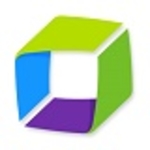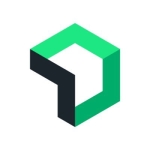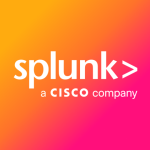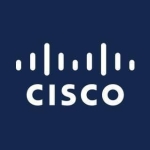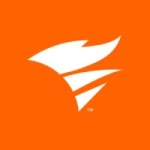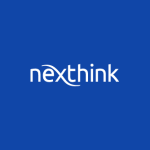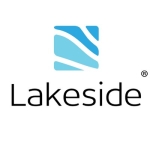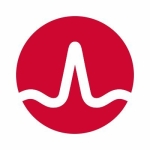
Alluvio Aternity Primary Use Case
I am a senior program manager and consultant who has worked with numerous companies. I downloaded the report for personal knowledge and was comparing tech solutions, like Aternity and Alluvio Aternity. My work involves consulting organizations and enhancing my knowledge on product technology.
View full review »
We use it for endpoint system and application performance management.
View full review »We have over 1,00,000 users. Alluvio Aternity gives us some visibility into applications that may be impacting our end users where our end users are getting low-performance scores. It allows us to go in and start troubleshooting the potential issues.
View full review »Buyer's Guide
Alluvio Aternity
October 2025
Learn what your peers think about Alluvio Aternity. Get advice and tips from experienced pros sharing their opinions. Updated: October 2025.
870,697 professionals have used our research since 2012.
RD
Ryan Du Plessis
Head of Cyber Security Engineering & Oversight at a media company with 10,001+ employees
The initial use case was purely endpoint performance monitoring, but one of the key things that really shone about Aternity as a product was that the use cases were extremely broad. It became, without a doubt, our most important asset management tool.
It was used for productivity management — that was also a very strong use case.
Another use case was compliance and security, because one of the key things that we started to leverage it for was monitoring when people were turning off or disabling antivirus products. We could measure that with Aternity and then take action. It was really great at compliance and security.
We also used it for application performance, obviously. It provided super-deep levels of insight into applications through performance tracking.
We also used it for cost reduction when it came to unused, licensed software. Adobe was a big one; Visio, Project, Access, etc. We managed to drop our spend quite heavily by using it for that.
View full review »Our primary use case is in the instance of our service desk, and we use the solution primarily for troubleshooting and visibility into the performance of remote and on-site employees.
We have physical and virtual PCs and monitor both Windows and Mac devices while our applications are across the board. We have desktop apps, cloud apps, on-prem apps, and stat solutions.
View full review »The solution is used for the digital experience. It is also used for auto-remediation and reporting issues in servers. Currently, we use it only on our VDI.
View full review »We use Alluvio Aternity for digital experience monitoring.
The solution is cloud-based SaaS.
View full review »As a bank we have a lot of retail branches, and we especially rely on Aternity for helping us do fault domain isolation across our infrastructure and in the end-user space. We can understand relative performance between different remote locations, and we can understand, within a user profile, when there are hardware issues and when there may be software issues. We use it in our corporate offices as well, but we really see the focus being around when a branch user is having a problem.
We're not as mature as some organizations so that we don't have a full, proactive reporting and alerting built through Aternity yet, but that's on our agenda for the near-term, in the next three to six months.
We deployed it in our own AWS space. It's not on-prem, but it's also not SaaS.
View full review »We have three general buckets that we put things in:
- For ad hoc troubleshooting of individual problems that people are having with their laptops in the field.
- Finding, identifying, and resolving wide-scale issues that exist in the field.
- Understanding the impact of changes that we're making in the field as well as reducing the negative impact of changes made in the field.
We need to understand how many machines are experiencing certain crashes, for example:
- Blue screens
- Specific applications that are crashing.
- Specific versions of applications that are crashing.
- How various laptop models are performing differently, either having better or worse stability than other models.
Within our company, we have approximately 2,700 users and around 3,000 devices. We primarily use Aternity on our mobile laptop fleet, which includes about 1,200 devices. We use it to get insights into usability and user-experience on those devices.
We use it to monitor applications, application performance, for alerting of system errors, troubleshooting, tracking changes and how they've affected the performance. We use it for all the functions of the platform to give us that visibility.
We're using the SaaS version.
View full review »We are using it for user experience analysis and troubleshooting of end user problems. Down the road, we are planning to integrate it with other systems and do data mining and analytics to analyze user experience trends, then correlate and generate alerts if there are systematic problems in the user experience. We can then correlate it to the line of business, location, and the specific software causing the problem.
We previously used version 7 and are now using version 11.
View full review »BS
Balaji Surikapuram
Team Lead - IT Collaboration at a retailer with 10,001+ employees
Because we are in retail, we have a lot of store-facing applications and they have some performance issues. We really want to know how an application is behaving at the endpoint, from the end-user perspective. We support Microsoft Teams, SharePoint, and all the Microsoft SaaS products.
One of our use cases was to cover some gaps in our current monitoring. We have visibility into the flows and the traffic coming from our branch routers. We have visibility into the infrastructure, SNMP monitoring for our servers, but we never had anything previously to tell us what the end-user is seeing.
The biggest use case we have is identifying the scope of issues. We get tickets all the time saying, "The network is slow at this location." Being able to see and compare the performance of the applications at different locations is huge for us. And when we have an application that's having issues, it will let us know the scope; if it's just one site or all users or one user on VPN.
We have relatively large operations. I'm responsible for North and South America and although we're part of a global network as well, that's currently my scope. We looked for a solution to help us improve end-user performance monitoring. We have about 8,000 workstations distributed across about 500 locations in the U.S., and in South America, we have 3,000 machines in roughly 200 locations.
View full review »Alluvio Aternity is primarily used to understand what is going on in the environment.
Alluvio Aternity is a SaaS solution.
View full review »My clients use the solution to access user activity reports. They primarily use it for endpoint monitoring purposes.
View full review »MS
MikeSullivan
Digital Experience - Team Leader Canterbury at a tech services company with 501-1,000 employees
I work for a managed service provider, and we offer Aternity as one of the main solutions for any customer who needs applications and full end-to-end user experience monitoring.
The main use case is around application performance. Another main use case is related to Teams. Our customers like to know what's happening with Teams when they call in. Is it a performance issue at the backend or within their desktop environment?
We have its SaaS-based service version. It is deployed on the cloud, but the agents are deployed on-premise. So, I needed to buy stuff.
View full review »IC
Iven Chung
Infrastructure Architect Specialist at Scotiabank
We have many use cases for Aternity, but the key ones are that we use it to validate and deploy. One of our big initiatives was converting all of our users within the bank to Office 365. Aternity was heavily used for validation and performance monitoring of the Office 365 project.
View full review »ZA
Zoilo Amoranto
Service Designer at a financial services firm with 10,001+ employees
We have a big number of devices and we use it to get a pulse check of how our desktops or workstations are behaving across the enterprise. We don't have it on every device. We have it scattered across all locations where we have a presence. We get metrics such as CPU information, memory utilization and, most importantly, the application performance that comes out-of-the-box with Aternity.
Let's say we release new hardware. We have a testing team and they want to see how applications will behave on that new hardware. They install Aternity and they look at the metrics — the CPU, memory utilization, and application response times. That's how a lot of our businesses use it. There's another area where we just focus on how our application is behaving. So the two core uses are hardware performance, based on a new release of hardware, and application performance, regardless of the hardware.
We used to have the on-prem Aternity solution, but now we are using their SaaS solution.
View full review »We use it for end-user computer performance monitoring and troubleshooting.
View full review »Buyer's Guide
Alluvio Aternity
October 2025
Learn what your peers think about Alluvio Aternity. Get advice and tips from experienced pros sharing their opinions. Updated: October 2025.
870,697 professionals have used our research since 2012.






